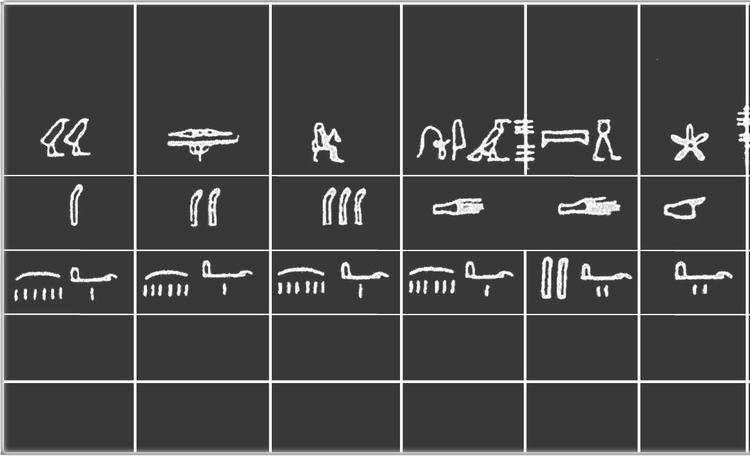 | ||
The digit or finger is an ancient and obsolete non-SI unit of measurement of length. It was originally based on the breadth of a human finger. It was a fundamental unit of length in the Ancient Egyptian, Mesopotamian, Hebrew, Ancient Greek and Roman systems of measurement.
Contents
In astronomy a digit is one twelfth of the diameter of the sun or the moon.
Ancient Egypt
The digit, also called a finger or fingerbreadth, is a unit of measurement originally based on the breadth of a human finger. In Ancient Egypt it was the basic unit of subdivision of the cubit.
On surviving Ancient Egyptian cubit-rods, the royal cubit is divided into seven palms of four digits or fingers each. The royal cubit measured approximately 525 mm, so the length of the ancient Egyptian digit was about 19 mm.
Mesopotamia
In the classical Akkadian Empire system instituted in about 2150 BC during the reign of Naram-Sin, the finger was one-thirtieth of a cubit length. The cubit was equivalent to approximately 497 mm, so the finger was equal to about 17 mm. Basic length was used in architecture and field division.
Britain
A digit (lat. digitus, "finger"), when used as a unit of length, is usually a sixteenth of a foot or 3/4" (1.905 cm for the international inch). The width of an adult human male finger tip is indeed about 2 centimetres. In English this unit has mostly fallen out of use, as do others based on the human arm: finger (7/6 digit), palm (4 digits), hand (16/3 digits), shaftment (8 digits), span (12 digits), cubit (24 digits) and ell (60 digits).
It is in general equal to the foot-nail, although the term nail can also be used as 1/16 of yard and other units.
Astronomy
In astronomy a digit is, or was until recently, one twelfth of the diameter of the sun or the moon. This is found in the Moralia of Plutarch, XII:23, but the definition as exactly one twelfth of the diameter may be due to Ptolemy. Sosigenes of Alexandria had observed in the 1st century AD that on a dioptra, a disc with a diameter of 11 or 12 digits (of length) was needed to cover the moon.
The unit was used in Arab or Islamic astronomical works such as those of Ṣadr al‐Sharīʿa al‐Thānī (d.1346/7), where it is called Arabic: إصبعا iṣba' , digit or finger.
The astronomical digit was in use in Britain for centuries. Heath, writing in 1760, explains that 12 digits are equal to the diameter in eclipse of the sun, but that 23 may be needed for that of the moon, those over 12 representing the extent to which the Earth's shadow is larger than the Moon. The unit is apparently not in current use, but is found in recent dictionaries.
Alcoholic Beverages
A 'finger' of an alcoholic beverage is colloquially referred to as a 'digit'.
